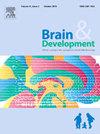脑功能障碍潜在的视觉雪综合征:洞察治疗意义
IF 1.3
4区 医学
Q4 CLINICAL NEUROLOGY
引用次数: 0
摘要
视觉雪(VS)的定义是动态的,连续的小点在整个视野中持续超过三个月。VS常与增强全视现象、回视、畏光和夜盲症有关。这些症状现在被称为视觉雪综合征(VSS)。据报道,VSS影响了大约2%的英国人口。神经影像学有助于更好地了解VSS的发病机制。虽然视觉关联区功能障碍可能在其病理生理中起关键作用,但功能和微观结构异常超出了视觉系统。然而,尚未发现VSS的特异性标志物,这使得VSS的诊断具有挑战性。VSS的治疗方法仍有待确定。拉莫三嗪和认知行为疗法只有零星的治疗成功。鉴于其疾病状态的复杂性,多学科的治疗方法似乎需要更有效的症状管理。本文章由计算机程序翻译,如有差异,请以英文原文为准。
Brain dysfunction underlying visual snow syndrome: Insights into therapeutic implications
Visual snow (VS) is defined as dynamic, continuous tiny dots across the entire visual field persisting for more than three months. VS is frequently associated with enhanced entoptic phenomenon, palinopsia, photophobia and night blindness. This constellation of symptoms is now referred to as visual snow syndrome (VSS). VSS is reported to affect approximately 2 % of the UK population. Neuroimaging has contributed to a better understanding of VSS disease mechanism. While the dysfunction of visual association area is likely to play a pivotal role in its pathophysiology, functional and microstructural abnormalities extend beyond the visual system. Nevertheless, no specific marker for VSS has been identified, which makes the diagnosis of VSS challenging. The treatment of VSS remains to be established. There has been only sporadic therapeutic success with lamotrigine and cognitive behavioral therapy. Given the complexity of its disease state, multidisciplinary therapeutic approaches appear to be required for more effective symptom management.
求助全文
通过发布文献求助,成功后即可免费获取论文全文。
去求助
来源期刊

Brain & Development
医学-临床神经学
CiteScore
3.60
自引率
0.00%
发文量
153
审稿时长
50 days
期刊介绍:
Brain and Development (ISSN 0387-7604) is the Official Journal of the Japanese Society of Child Neurology, and is aimed to promote clinical child neurology and developmental neuroscience.
The journal is devoted to publishing Review Articles, Full Length Original Papers, Case Reports and Letters to the Editor in the field of Child Neurology and related sciences. Proceedings of meetings, and professional announcements will be published at the Editor''s discretion. Letters concerning articles published in Brain and Development and other relevant issues are also welcome.
 求助内容:
求助内容: 应助结果提醒方式:
应助结果提醒方式:


